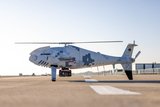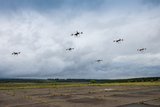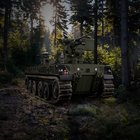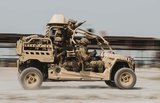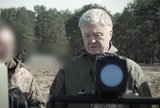Northrop Grumman, Bell Helicopter conduct first "power-on" of new Fire-X medium-range vertical unmanned system
Northrop Grumman Corporation and Bell Helicopter, a Textron company, have moved a significant step closer to being able to offer military users a vertical unmanned system that can ferry cargo - either internally or externally - over extended distances.
On Sept. 17, the team applied external power for the first time to the main computers and associated subsystems for its new Fire-X medium-range vertical unmanned aerial system (VUAS), currently in final integration and test at Bell Helicopter's Xworx rapid prototyping facility in Fort Worth, Texas.
First flight for the new extended range, cargo-hauling VUAS, which is based on the FAA-certified Bell 407 airframe, is expected by the end of CY2010.
"The Fire-X 'power-on' sequence, which validates the integrity of the electrical system, went exactly as planned," said George Spongberg, Northrop Grumman's Fire-X program manager. "It confirmed that the air vehicle's vehicle management system has been configured properly, and that all of the air vehicle's new wire harnesses are delivering power at the right levels to all of the major subsystems."
Fire-X's new wire harnesses were produced, tested and installed by Bell Helicopter, he added.
The power-on event follows four months of Fire-X vehicle modifications at Xworx to convert a commercial Bell 407 from a piloted vehicle into an unmanned or optionally piloted vehicle. The modifications included not only removal of non-mission-essential equipment such as seats and sound insulation, but also installation of new wire harnesses and avionics required to control the vehicle in an unmanned configuration.
"The challenge," explains Spongberg, "is to duplicate, using hardware and software, the behavior of the air vehicle when it is flown by a human. For example, we're installing and testing actuators that will move the air vehicle's flight control surfaces in response to commands from a ground control station the same way they would move in response to commands from a pilot in the cockpit."
The team is also installing and validating the software that will perform critical guidance, navigation and control (GN&C) functions for the new system, he added.
Over the next month, the Northrop Grumman/Bell Fire-X team expects to conduct preliminary flights of the air vehicle in Fort Worth in a manned configuration to validate its GN&C system, then convert it back to an unmanned system. After completion of ground testing and engine runs, the air vehicle will be ferried, in an optionally piloted configuration, to the US Army's Yuma Proving Ground, Ariz. for final testing before Fire-X's first demonstration flight in an unmanned configuration.
Fire-X is a fully autonomous, four-blade, single-engine unmanned helicopter that combines the best of two proven air systems in a low cost, fast-fielding package: the versatile reconnaissance, surveillance and target acquisition architecture of the US Navy's MQ-8B Fire Scout vertical takeoff and landing tactical UAV, and the extended range, payload and cargo hauling capabilities of the commercially mature Bell 407 helicopter.
Source: Northrop Grumman
More from Uncrewed Vehicles
-
![Ready for the race: Air separation drone swarms vs. air defence systems]()
Ready for the race: Air separation drone swarms vs. air defence systems
As the dynamics of aerial combat rapidly evolve, Chinese scientists have engineered a sophisticated air separation drone model that can fragment into up to six drones, each capable of executing distinct battlefield roles and challenging the efficacy of current anti-drone defences such as the UK’s Dragonfire laser system.
-
![Israel’s MALE UAVs ‘must adapt’ to Iranian-made air defences]()
Israel’s MALE UAVs ‘must adapt’ to Iranian-made air defences
Advancements in air defence technologies have begun to reshape aerial combat dynamics in the Middle East, as illustrated by recent events involving the Israeli Air Force and Hezbollah.
-
![Hundreds more UAS sent to Ukraine forces with thousands more on the way]()
Hundreds more UAS sent to Ukraine forces with thousands more on the way
Both sides of the Russia-Ukraine war have been using UAS for effective low-cost attacks, as well as impactful web and social media footage. Thousands more have now been committed to Ukrainian forces.
-
![AI and software companies selected for US Army Robotic Combat Vehicle subsystems]()
AI and software companies selected for US Army Robotic Combat Vehicle subsystems
The US Army has intentions to develop light, medium and heavy variants of the Robotic Combat Vehicle (RCV) as part of the branche’s Next Generation Combat Vehicle family.
-
![DroneShield to improve software of DroneSentry-X C-UAS system under new contract]()
DroneShield to improve software of DroneSentry-X C-UAS system under new contract
DroneSentry-X, a cross-vehicle compatible, automated 360° C-UAS detect and defeat device, can offer 360° awareness and protection using integrated sensors. According to its manufacturer, it is suitable for mobile operations, on-site surveillance and on-the-move missions.
-
![Ukraine takes delivery of new indigenous C-UAS systems]()
Ukraine takes delivery of new indigenous C-UAS systems
Funded by the country’s former president, the new C-UAS systems will be sent to the frontline where they have already been tested against Russian invading forces.









